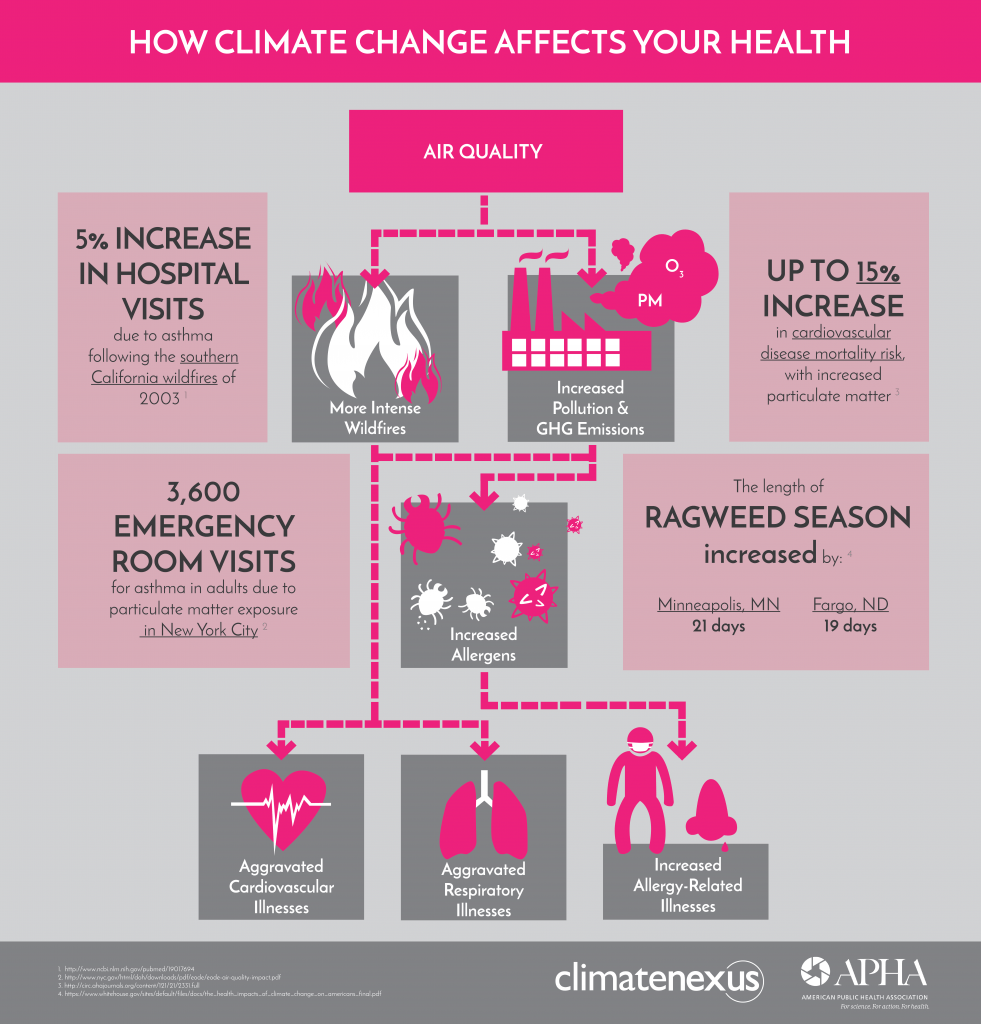Climate change reduces the air quality, and thus, people’s health
Greenhouse gas emissions, including ozone (O3), carbon dioxide (CO2) and particulate matter from fossil fuels, not only cause climate change but also pollute the breathable air, causing many public health problems.
National Climate Assessment claims that climate change will affect the air quality through outdoor and indoor air pollution, as well as allergens.
Climate change and increasing temperatures increases the formation of O3 as well as particulate matter. These contribute to the growth in smog across cities in the U.S. O3 is associated with diminished lung function, increased hospital admissions and emergency room visits for asthma and increases in premature deaths. Studies show that increased O3 could result in thousands of additional illnesses and deaths per year in the next ten years.
Furthermore, increasing CO2 levels boosts the number of plants that release allergens. Thus, for people with existing allergy conditions may have increased health risk from climate change. Simultaneous exposure to allergens and air pollutants can increase the severity of the allergic reactions for some people.
Climate change also fuels the intensity and frequencies of wildfires, and the impacts of wildfires on human health are solidly documented. Particulate matter and toxins, including carbon monoxide, nitrogen oxides, and other compounds from wildfires, worsen local air quality for days or even months during and after the fire. It is estimated that there are between 260,000 and 600,000 deaths globally from wildfire smoke between 1997-2006, annually.

Health Impact
Decrease in air quality can impact public health in multiple ways. Increased formation of O3, more frequent and larger wildfires that significantly reduce air quality, as well as longer exposure time to allergens are all associated with many health problems.
- Cardiovascular illness: The EPA links to studies which have found direct links between air pollution and increased cardiovascular risk. Long-term exposure to particulate matter and nitrogen oxides can prematurely age blood vessels and contribute to a more rapid buildup of calcium in the coronary artery, increasing the risks of heart attacks and strokes.
- Respiratory illness: According to the National Climate Assessment, ozone and smog exposure can cause diminished lung function, increase acute respiratory illness and increased hospital admissions and emergency department visits for asthma. For example, there are nearly 200,000 new cases of asthma annually in California and the incidence is increasing.
- Allergy-related illness: Asthma and Allergy Foundation of America states that ragweed, a primary source for allergen, grows quicker and produces more pollen with increased CO2 levels from burning fossil fuels. Furthermore, with rising temperatures and warmer climates allow for a longer growing season, which allows ragweed to produce more pollen later into fall. Climate change can expand the habitat for aaks and hickories, two highly allergenic tree species, further impacting springtime allergies.


